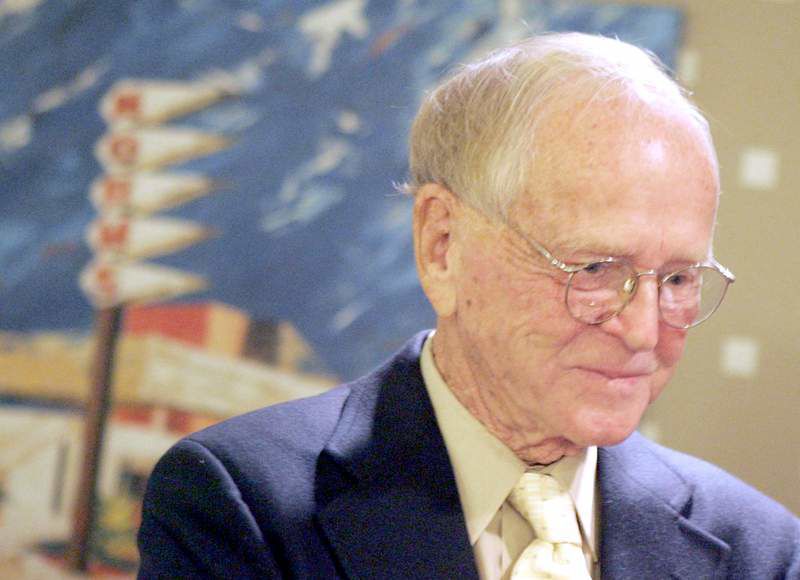Architect who designed ‘Googie’ coffee shops dies
Published 5:00 am Saturday, April 30, 2011

- Eldon Davis, the influential architect behind the California coffee shop and for midcentury designs inspired by the Space Age and the region's car culture, died April 22 at a West Hills hospital of complications from spinal meningitis, said his wife, Luana. He was 94.
LOS ANGELES — Eldon Davis, an influential architect known as the father of the California coffee shop and for midcentury designs inspired by the Space Age and the region’s car culture, has died. He was 94.
Davis died April 22 at a San Fernando Valley hospital of complications from spinal meningitis, said his wife, Luana.
When America was in love with aerodynamic design, Davis devised a concept for Norms restaurant that made it appear poised for liftoff.
Built on L.A.’s La Cienega Boulevard in 1957, Norms had many features that came to typify the whimsical style of architecture known as Googie — a vaulted roof that resembles a flying wing, a room-length dining counter and an attention-grabbing vertical neon sign with roots in Las Vegas kitsch.
With architect Louis Armet, Davis opened a local firm in 1947 and developed a reputation for being willing to try almost anything to catch the attention of motorists who sped by.
The architects were chief proponents of Googie, named for a now-defunct cafe in West Hollywood, and derided by critics in the 1950s and 1960s “who didn’t think a lot of our work, but we didn’t care,” said Victor Newlove, a partner in the firm who started as an intern in the 1960s.
With their soaring and exaggerated roof lines, their buildings appeared to defy gravity, a structural innovation for which Davis was largely responsible.
“We just did the best we could with the problem at hand,” Davis told the Los Angeles Times in 1993. “We didn’t want to do what had been done.”
Neon signs became a trademark, and they devised an animated sign for Pann’s, a coffee shop near Westchester. Run by the same family since it opened in 1958, the restaurant is probably the best-preserved example of Davis’ work, Newlove said.
“He would do things that other architects would not think of doing, which is the hallmark of a fine architect,” Newlove said.
Other Davis designs include prototypes for local Denny’s and Bob’s Big Boy restaurants, blueprints that were exported across the country.
“They brought modern architecture to the daily life of the average Angeleno,” said Alan Hess, who wrote the 2004 book “Googie Redux.”
“There’s a great deal of interest and affection for their buildings,” Hess said. “The work of Armet and Davis is as significant to Southern California as Richard Neutra or Rudolph Schindler.”
Although Davis had a major role in popularizing what became known as Coffee Shop Modern, he was pragmatic about the lasting value of the more than 4,000 coffee shops his firm designed.
“I can’t see why they’d try to preserve any of them,” he told the Times in 1986. “We would have liked to have made them more aesthetic, but we were just designing them to sell hamburgers.”
In addition to his wife, Luana, Davis is survived by a daughter, Karen of Oregon; three sons, Dan, Mark and Wyatt, all of the Los Angeles area; five grandchildren; and two great-grandchildren.






